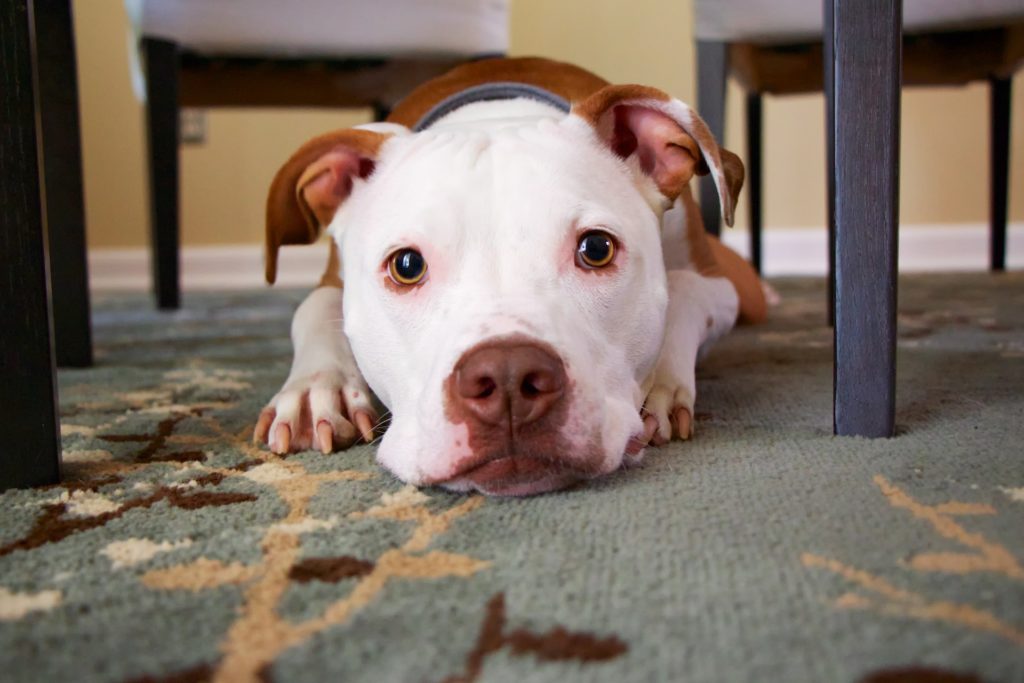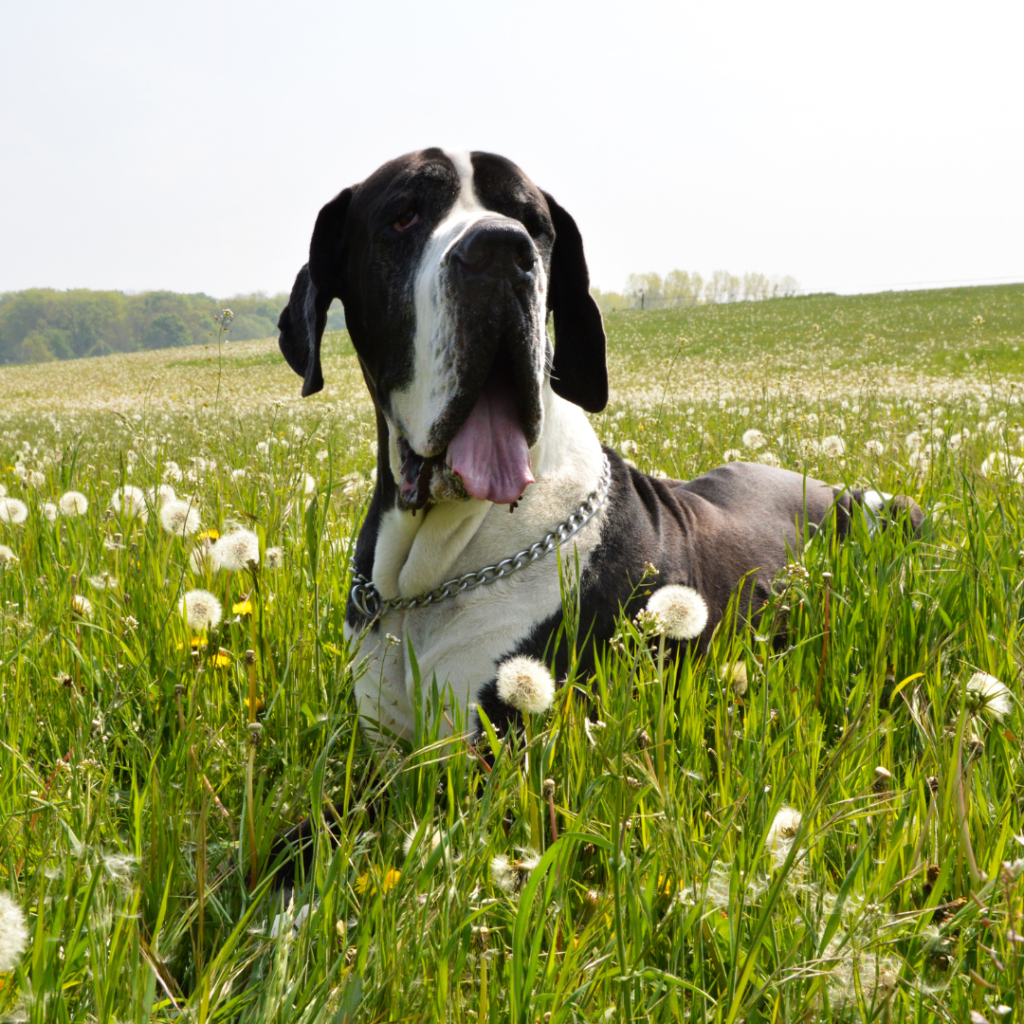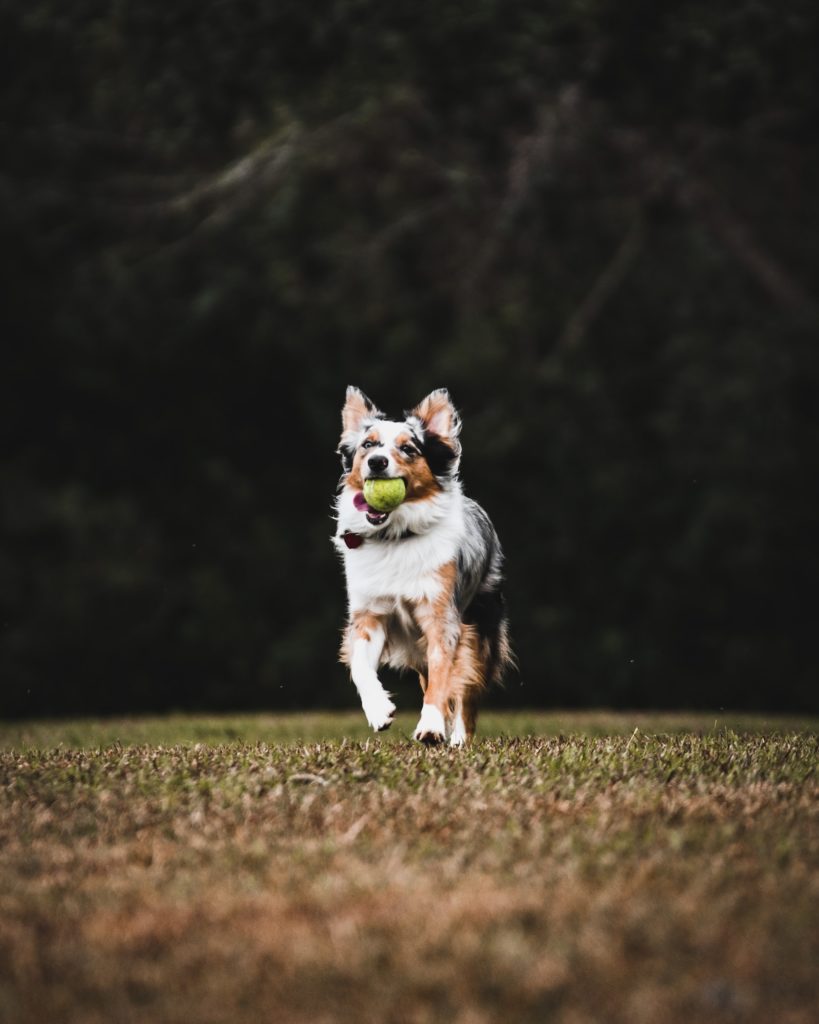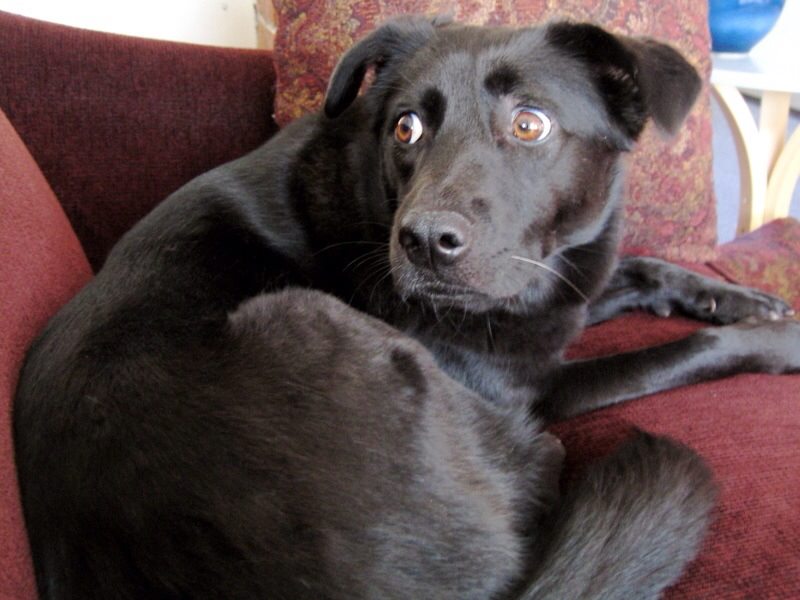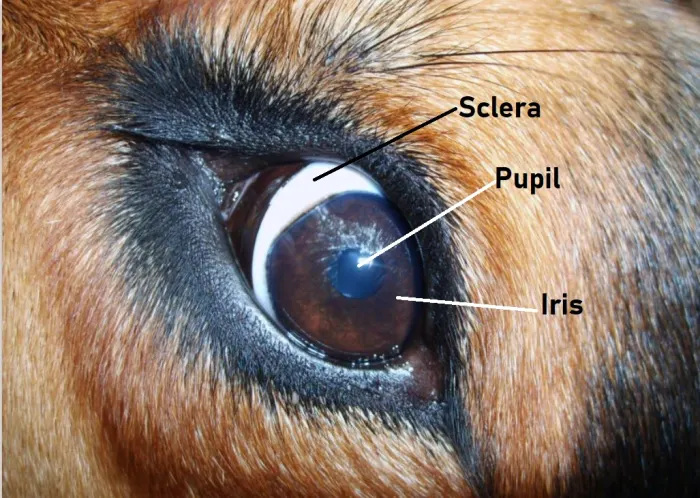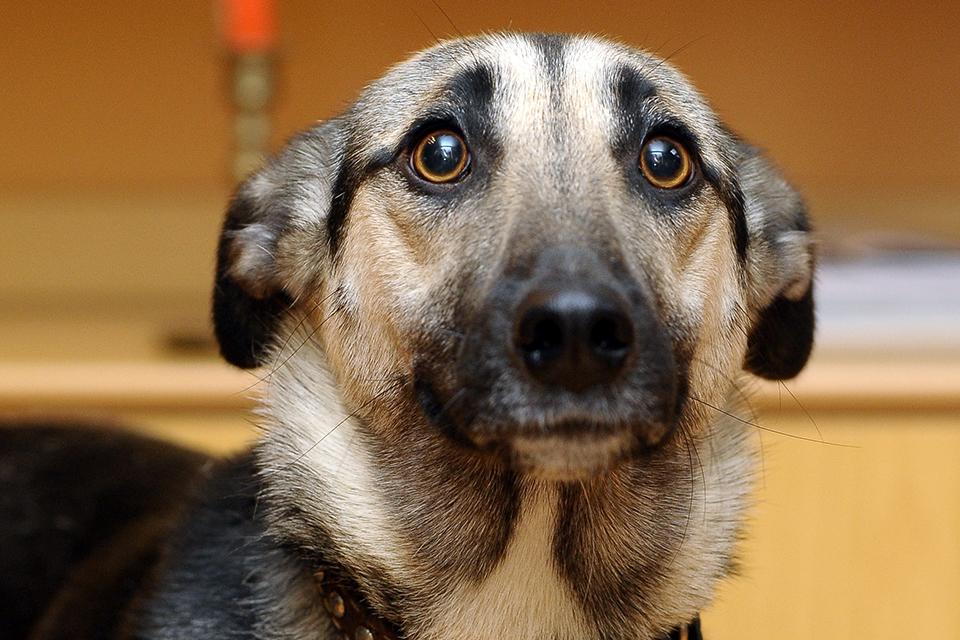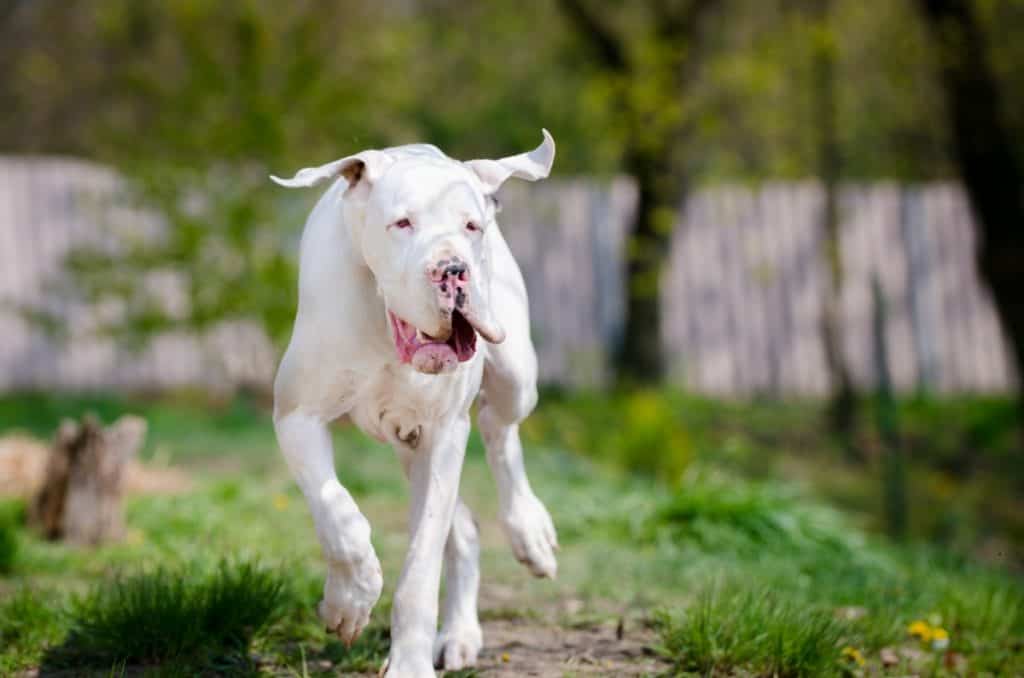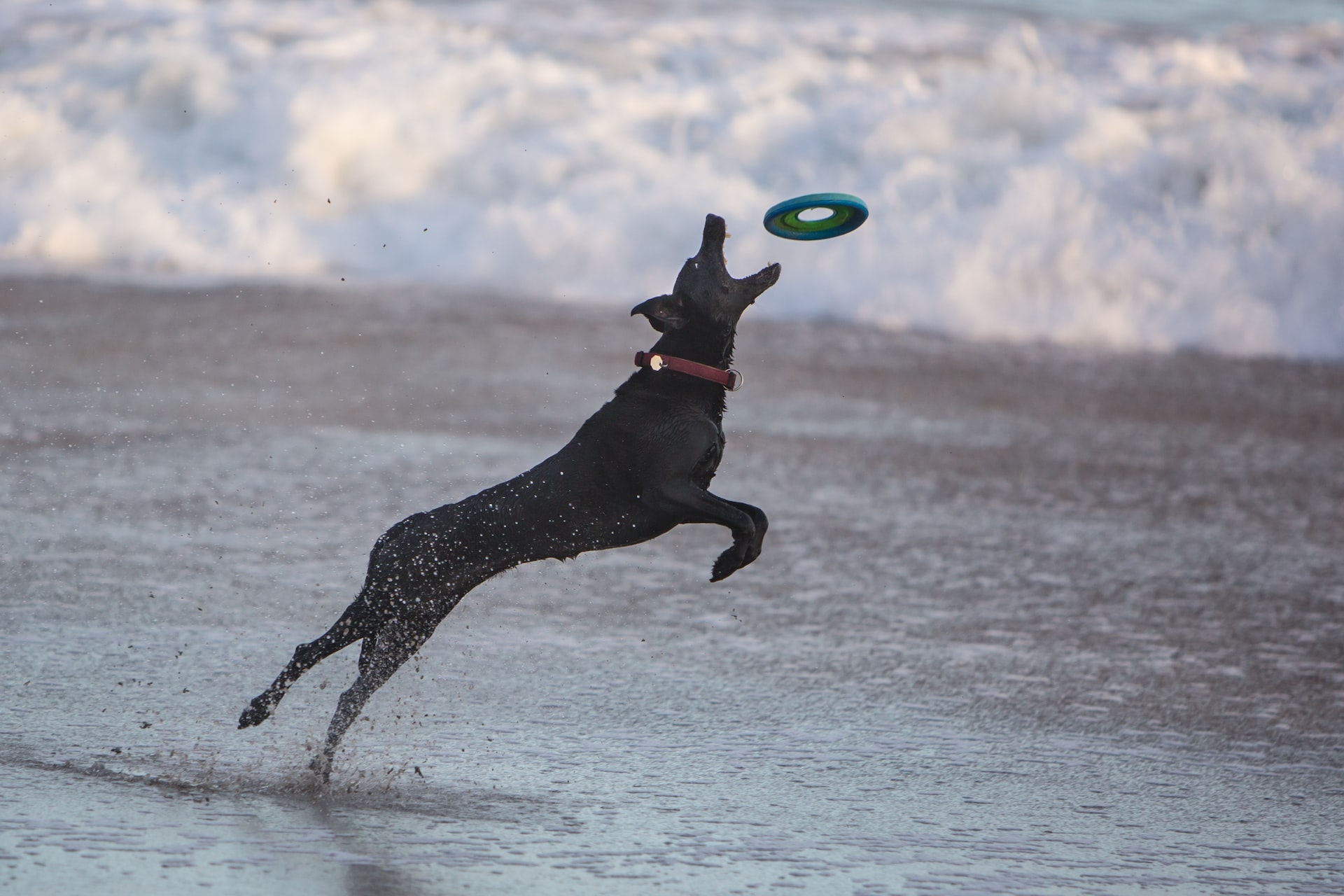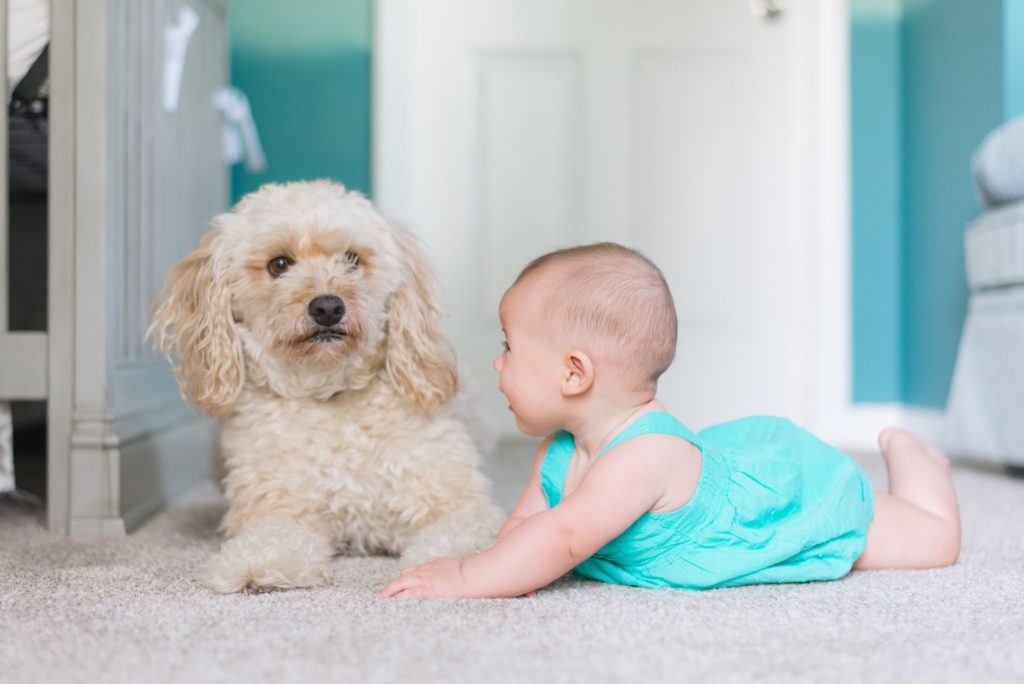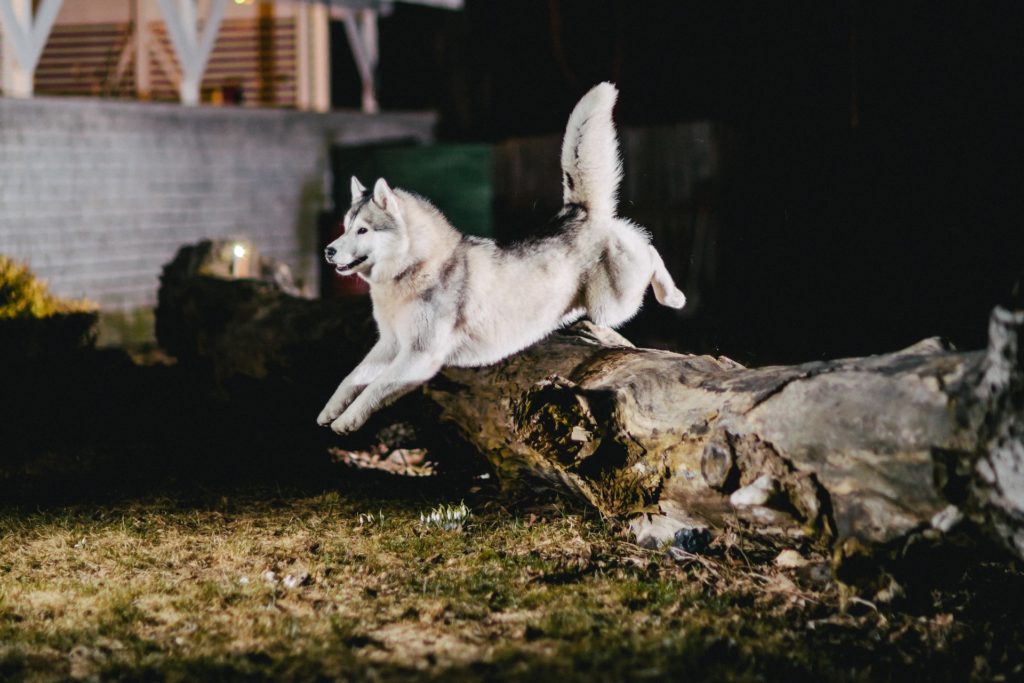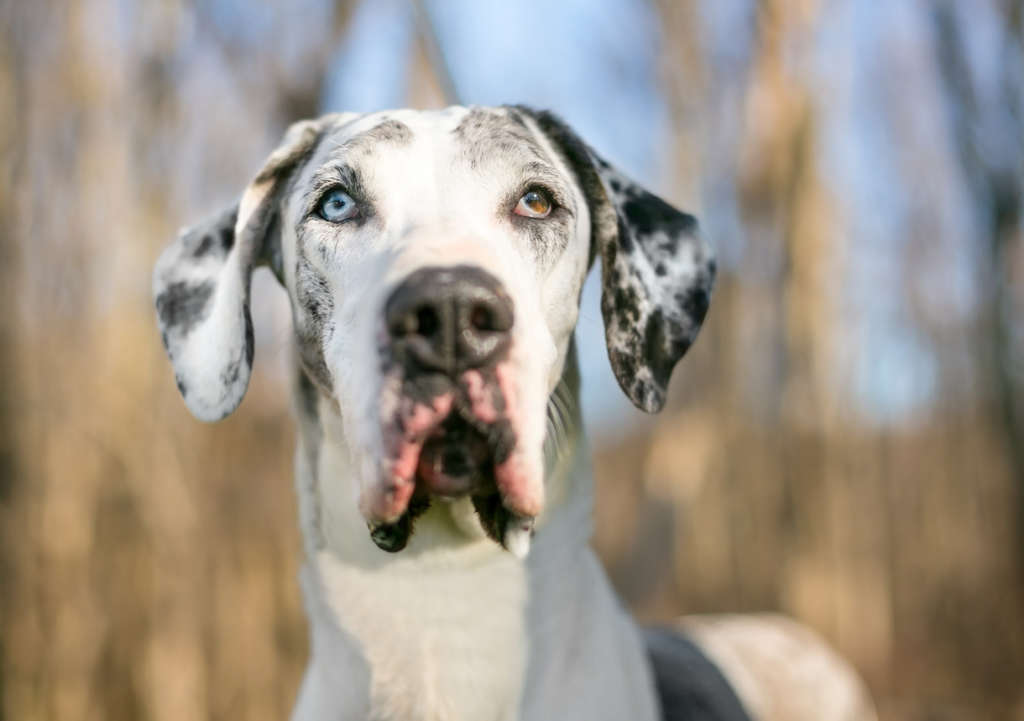Calming supplements for dogs have become increasingly popular as dog owners struggle to keep their dogs calm while they work, run errands, travel, or during events that may trigger anxiety or fear such as thunderstorms or fireworks. These supplements can provide a natural and safe way to promote relaxation and reduce stress in dogs, allowing them to feel more comfortable and at ease in various situations.
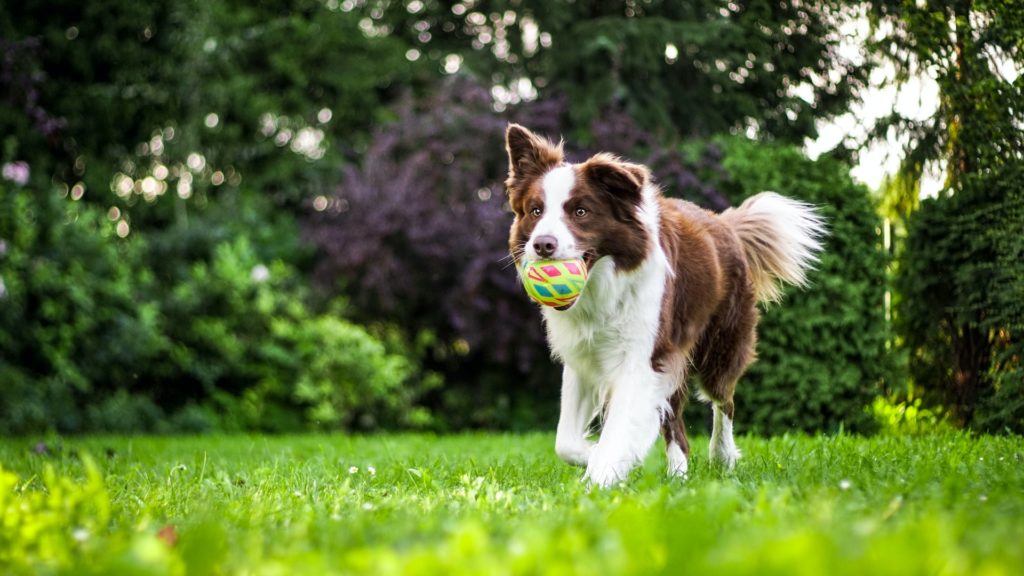
Fera Pet Calming Support is one such supplement that uses a unique blend of ingredients to support the gut-brain axis and promote a balanced mood in dogs. Whether your dog has a history of anxiety or you simply want to help them feel more relaxed and content, Fera Pet Calming Support is a great option to consider.If you have a dog that seems to be constantly anxious, restless, or fearful, you know how difficult it can be to calm them down.
Table of Contents

Loud noises, unfamiliar environments, and even moments of separation can trigger stress in our furry friends. Luckily, there are natural ways to help them relax and promote a sense of calmness.
What are Calming Supplements for Dogs?
The purpose of calming supplements for dogs is to promote relaxation, reduce anxiety, and calm nervous dogs. These supplements are designed to help dogs stay calm and relaxed without causing drowsiness or sedation.
They can be used for a variety of situations that may cause stress or anxiety in dogs, such as separation anxiety, travel anxiety, or fear of loud noises like thunderstorms or fireworks.

Calming supplements for dogs are typically made from a blend of natural ingredients such as herbs, amino acids, and probiotics, that are known to have calming properties. They are available in various forms such as tablets, chews, and liquids, and can be given to dogs on a daily basis or as needed. Calming supplements for dogs can be a great alternative to prescription medications or other treatments for dogs that suffer from anxiety or stress.
How can you tell if your dog is nervous, stressed or anxious?
Dogs can show signs of nervousness, stress, or anxiety in a variety of ways. Some common signs to look out for include:
- Excessive barking, whining, or howling
- Panting or heavy breathing
- Trembling or shaking
- Restlessness or pacing
- Hiding or seeking attention excessively
- Dilated pupils or rapid eye movement
- Loss of appetite or digestive issues
- Excessive grooming or licking
- Aggression or destructive behavior
- Avoidance of certain people, places, or situations
- Tail tucking
It’s important to note that not all dogs will exhibit the same signs of stress or anxiety, and some may show more subtle signs such as lip licking or yawning. If you notice any changes in your dog’s behavior or if they seem to be experiencing prolonged periods of stress or anxiety, it’s important to consult with your veterinarian to rule out any underlying medical issues and to discuss potential treatment options.
What are some options to help my stressed out and nervous dog?
There are several options to help a stressed-out or nervous dog. Here are some suggestions:
- Provide a calm and comfortable environment: Create a safe and quiet space for your dog with their favorite toys and bedding. Crate training is a great tool here!
- Exercise and playtime: Regular exercise and playtime can help reduce stress and anxiety in dogs. Take your dog for a walk or engage in other activities that they enjoy.
- Training and behavior modification: Consider working with a professional dog trainer or behaviorist to address your dog’s anxiety or stress through positive reinforcement training or behavior modification techniques.
- Calming supplements: Natural supplements like Fera Pet Calming Support can be a safe and effective way to promote relaxation and reduce stress in dogs.
- Veterinary medications: In more severe cases, your veterinarian may recommend prescription medications to help manage your dog’s anxiety or stress.
- Reduce exposure to triggers: Try to avoid or minimize exposure to situations that trigger your dog’s anxiety or stress, such as loud noises or unfamiliar environments.
- Provide comforting and reassuring touch: Petting, hugging, and comforting your dog can help reduce their anxiety and promote relaxation.
Remember, every dog is different, so it’s important to work with your veterinarian to determine the best course of action for your individual dog’s needs.
What calming supplement can I give my dog safely?
When looking for a calming supplement for your dog, it’s important to pay attention to the ingredients and choose a product that is safe and effective. Here are some things to look for that are safe and not safe in a supplement:
Safe ingredients:
- Natural ingredients: Choose a supplement that contains natural ingredients such as herbs, amino acids, and probiotics.
- High-quality ingredients: Look for products that use high-quality, pure ingredients to ensure that they are effective and safe for your dog.
- Clinically studied ingredients: Choose supplements that use ingredients that have been clinically studied and proven to be effective for calming dogs.
- Veterinarian-formulated: Look for products that are formulated by a veterinarian or animal nutritionist to ensure that they are safe and effective for dogs.
Not safe ingredients:
- Artificial ingredients: Avoid supplements that contain artificial colors, flavors, or preservatives, as these can be harmful to your dog’s health.
- Toxic ingredients: Some herbs and supplements can be toxic to dogs, so it’s important to do your research and choose a product that uses safe and non-toxic ingredients.
- Excessive dosage of certain ingredients: Some supplements may contain high doses of certain ingredients that can be harmful if given in excess, so it’s important to follow the recommended dosage instructions carefully.
Remember, always consult with your veterinarian before starting any new supplement to ensure that it is safe for your dog and will not interact with any existing health conditions or medications.
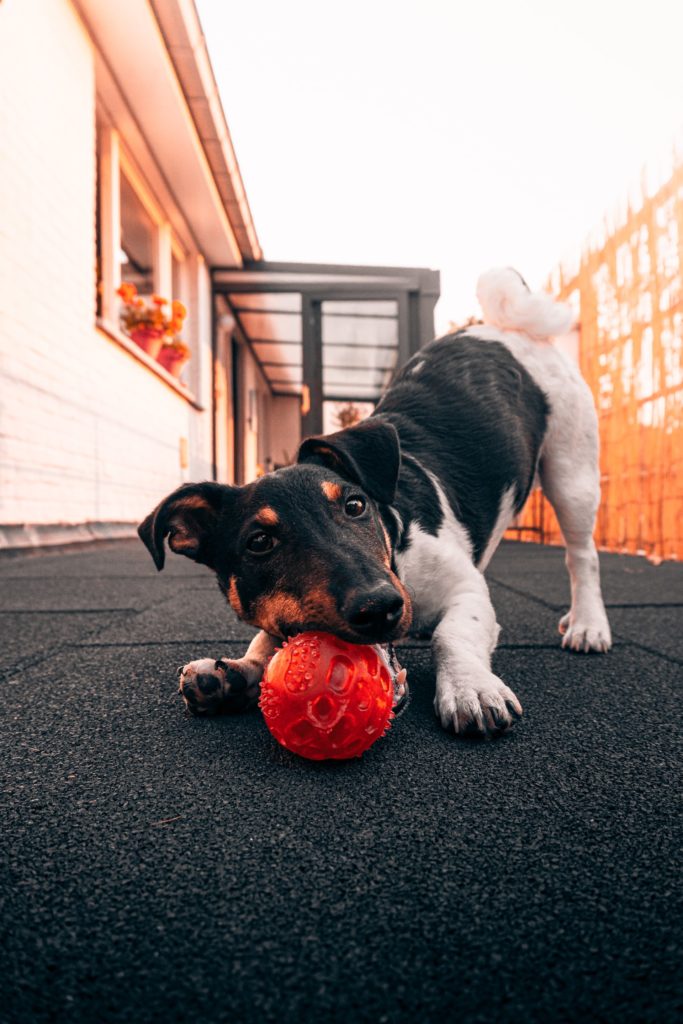
Fera Pet Calming Support Supplement for Dogs
There are many calming supplements available for dogs, but it’s important to choose a product that is safe and effective. Natural supplements that are formulated specifically for dogs and use high-quality, natural ingredients are generally a safe choice. One such supplement is Fera Pet Calming Support, which is a veterinarian-formulated supplement that contains a synergistic blend of natural ingredients, including L-Theanine and GABA, that are known to promote relaxation and reduce stress in dogs.
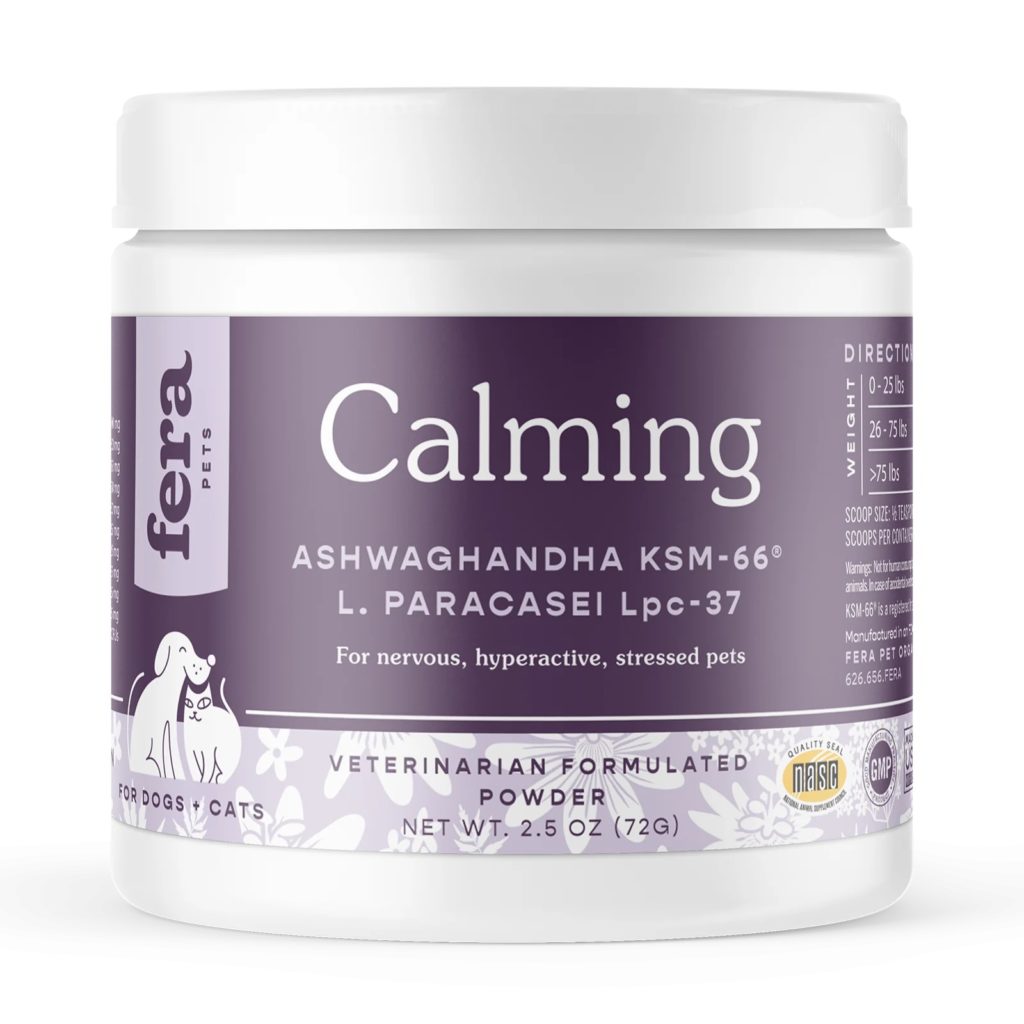
Fera Pet Calming Support is a veterinarian-formulated supplement that contains a synergistic blend of herbs, amino acids, neurotransmitters, and probiotics, all chosen for their demonstrated effectiveness in promoting relaxation and reducing stress in dogs.
With ingredients such as L-Theanine and GABA that work together to promote a balance of excitatory and inhibitory neurotransmitters, Fera Pet Calming Support is an excellent choice for dog calming and anxiety relief.
Ingredients of Fera Pet Calming Support for Dogs
Fera Pet Calming Support is a natural supplement that contains a blend of ingredients that work together to promote relaxation and reduce stress in dogs. Here are some of the key ingredients in Fera Pet Calming Support.

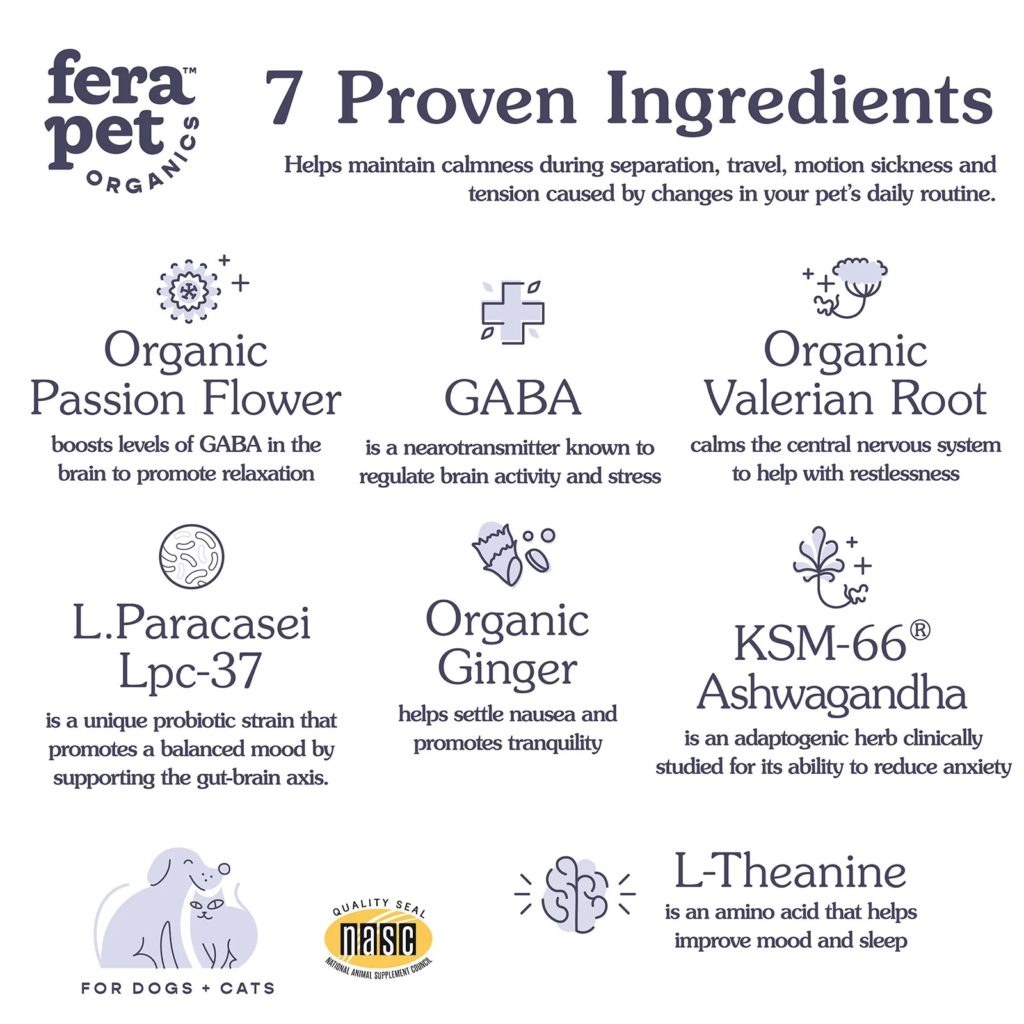
L-Theanine
L-Theanine is an amino acid found in tea leaves that is known to promote relaxation and reduce stress in dogs. It works by increasing levels of GABA, serotonin, and dopamine in the brain, which are neurotransmitters responsible for relaxation.
GABA
GABA is a calming neurotransmitter that works synergistically with L-Theanine to help promote relaxation and reduce stress in dogs. It helps to balance the excitatory and inhibitory neurotransmitters in the brain, which can help dogs feel more calm and at ease.
Lactobacillus Paracasei LPC-37
Lactobacillus Paracasei LPC-37 is a clinically studied probiotic strain that is included in Fera Pet Calming Support to promote a balanced mood by way of the Gut-Brain Axis. This strain of probiotic has been shown to reduce stress and promote relaxation in dogs.
Organic Passion Flower
Organic Passion Flower is a natural herb that has been used for centuries to promote relaxation and reduce anxiety in humans and animals. It works by increasing levels of GABA in the brain, which can help dogs feel more calm and at ease.
Organic Valerian Root
Organic Valerian Root is a natural herb that has been used for centuries to promote relaxation and reduce anxiety in humans and animals. It works by increasing levels of GABA in the brain and may also help to reduce nerve sensitivity.
Dosing Fera Pet Calming Support
Fera Pet Calming Support is a natural supplement that is safe and easy to administer to your dog.
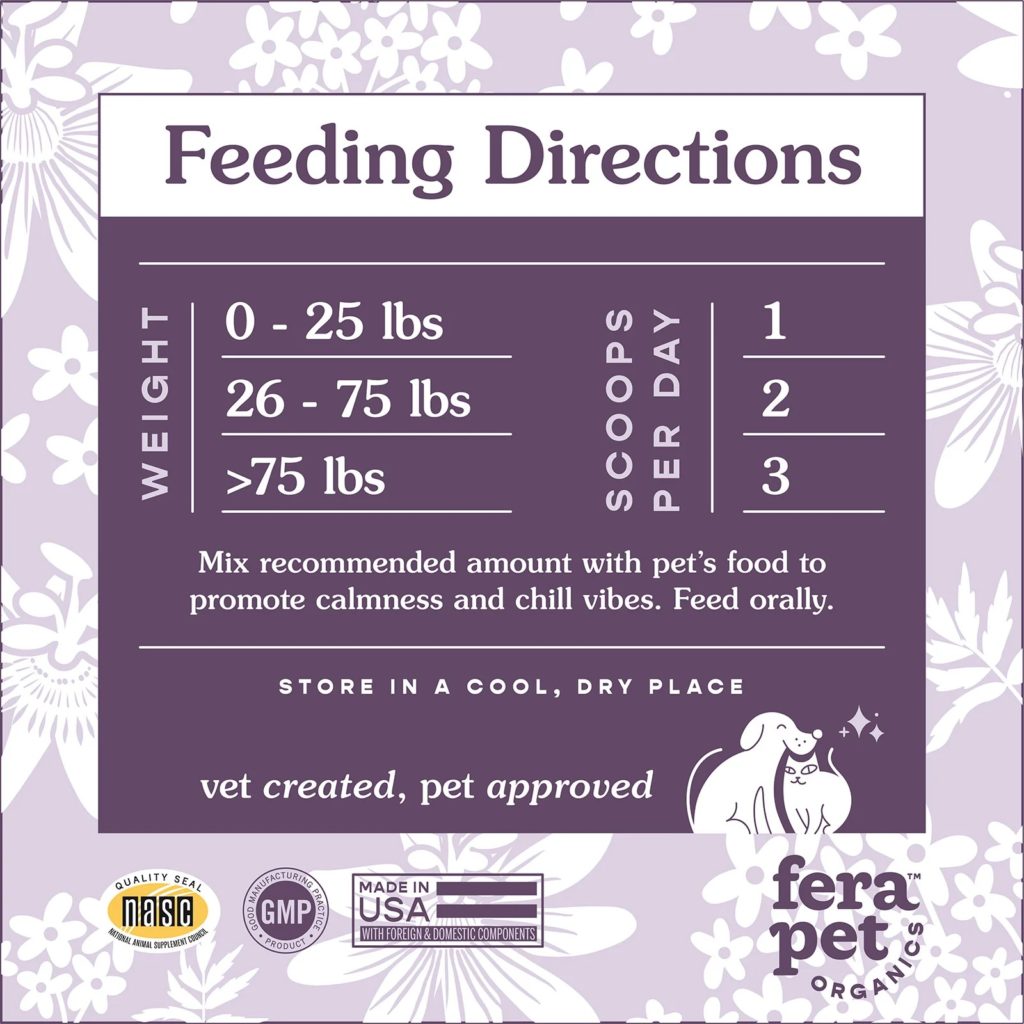
It comes in a powder form, and the recommended dosage depends on your dog’s weight. Here are some dosing guidelines for Fera Pet Calming Support:
- For dogs weighing less than 25 lbs, give 1 scoop (1 gram) daily.
- For dogs weighing between 25-50 lbs, give 2 scoops (2 grams) daily.
- For dogs weighing more than 50 lbs, give 3 scoops (3 grams) daily.
How to administer Fera Pet Calming Support?
The powder can be mixed into your dog’s food or water, and should be given daily for best results. It’s important to follow the manufacturer’s recommended dosage instructions carefully to ensure that your dog gets the appropriate amount of the supplement.
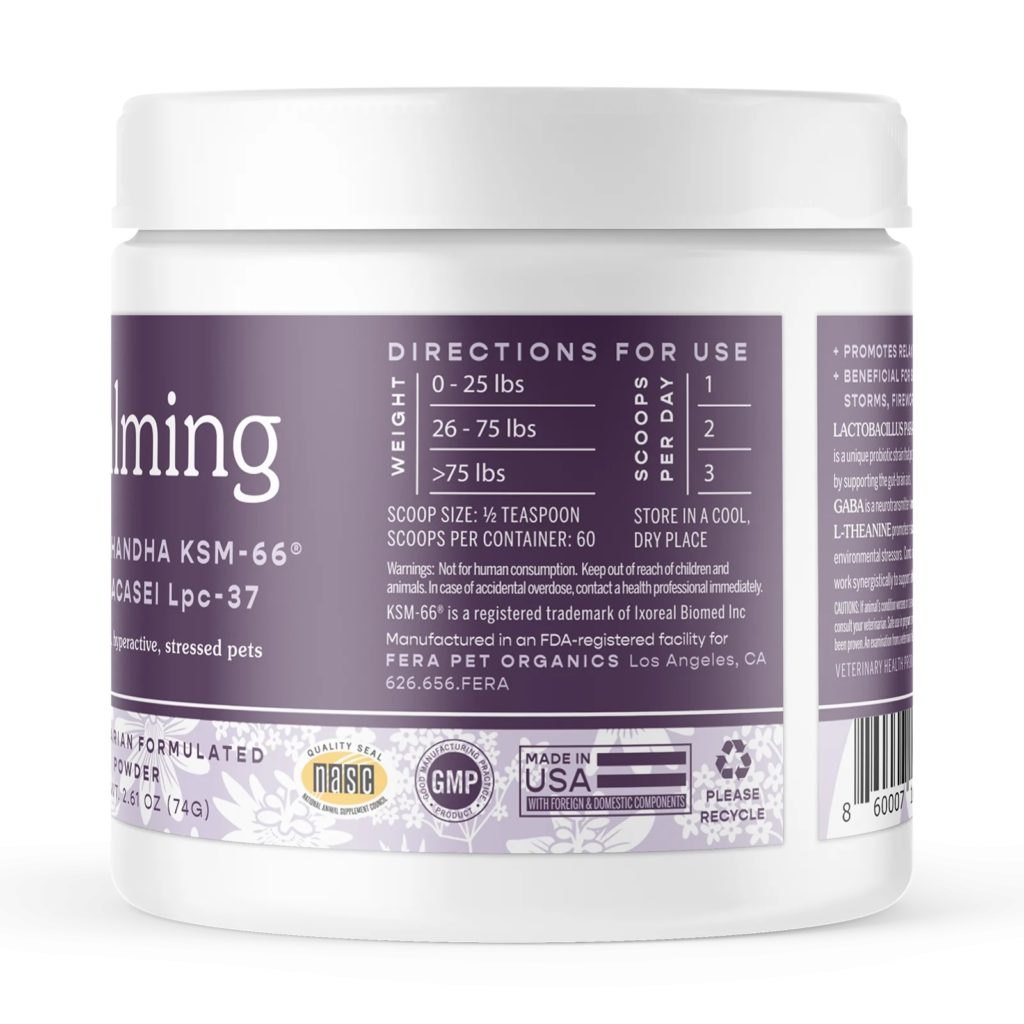
Remember, every dog is different, so it’s important to work with your veterinarian to determine the best course of action for your individual dog’s needs. If you have any questions or concerns about dosing Fera Pet Calming Support, consult with your veterinarian for guidance.
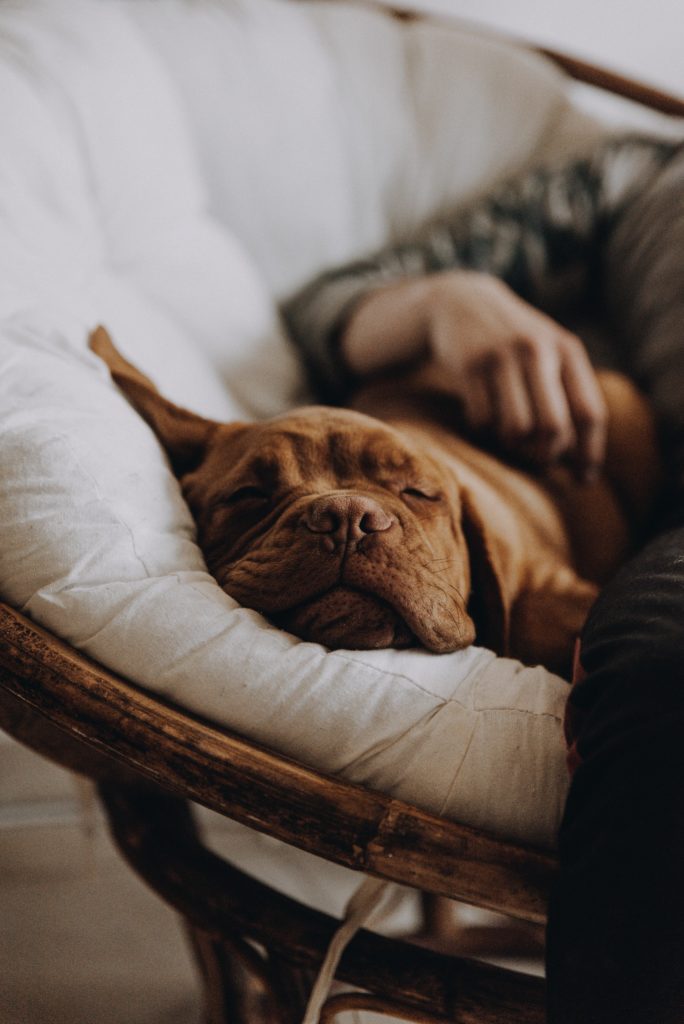
Benefits of using Fera Pet Calming Support
Fera Pet Calming Support is a natural supplement that offers a variety of benefits for dogs that are experiencing stress, anxiety, or nervousness.
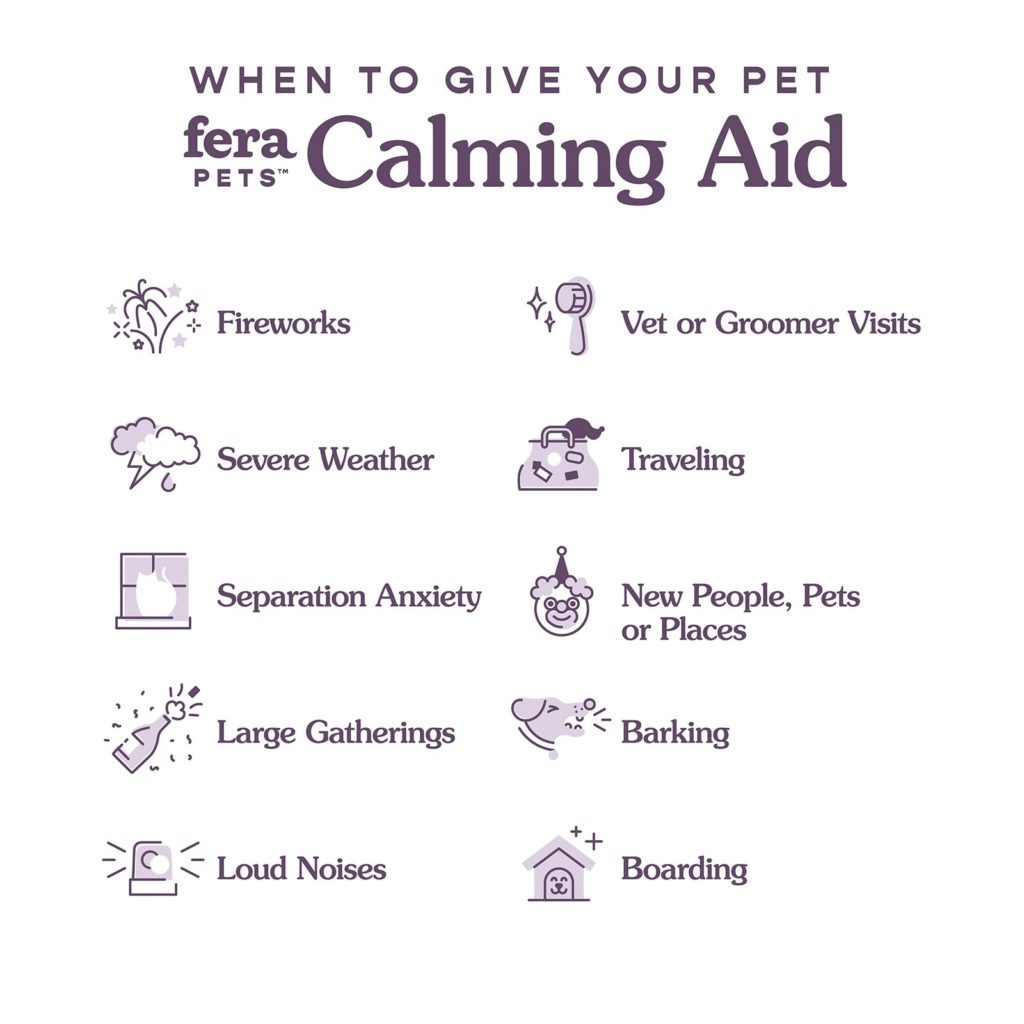
Promotes Relaxation and Reduces Stress
One of the main benefits of using Fera Pet Calming Support is that it promotes relaxation and reduces stress in dogs without causing drowsiness or sedation. This makes it an excellent choice for dogs that need help managing their anxiety or stress levels without compromising their energy levels.
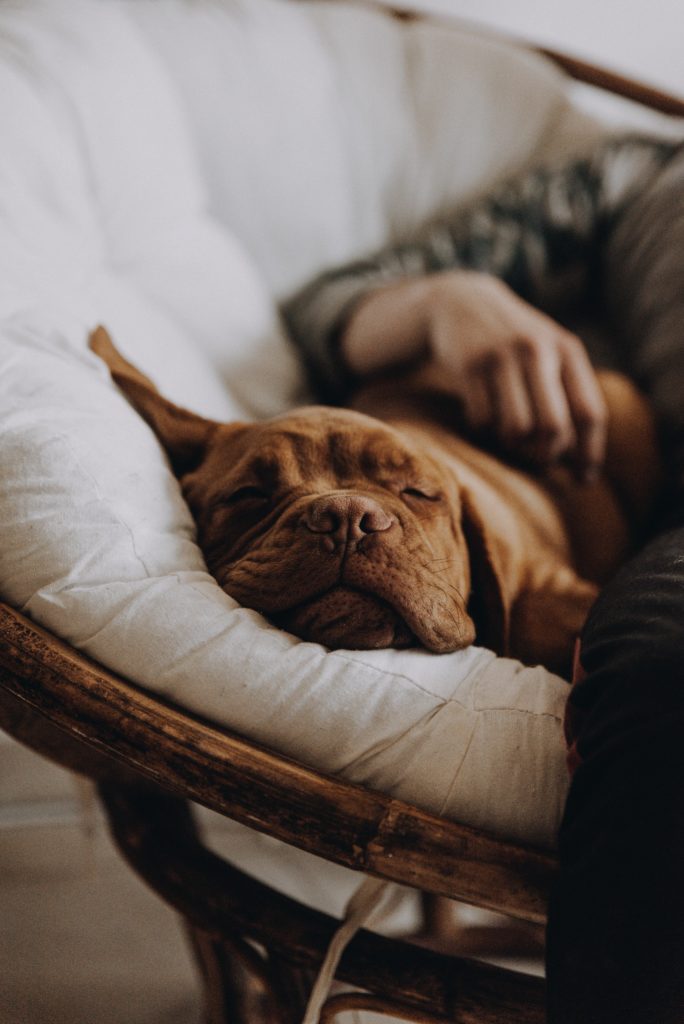
Contains High Level Ingredients for Calming
Another benefit of Fera Pet Calming Support is that it contains a blend of natural, high-quality ingredients that have been clinically studied and shown to be effective for calming dogs. These ingredients work synergistically to promote a balanced mood and reduce stress in dogs, helping them feel more calm and at ease.

Overall, Fera Pet Calming Support is a safe and effective way to promote relaxation and reduce stress in dogs, making it an excellent choice for pet owners looking for a natural and effective solution for their furry friends.
Dog Tail In Between Legs: Is Your Dog In Pain, Scared or Fearful?
How to introduce Fera Pet Calming Support to your dog
Introducing Fera Pet Calming Support to your dog is a simple and easy process that can be done in just a few steps.
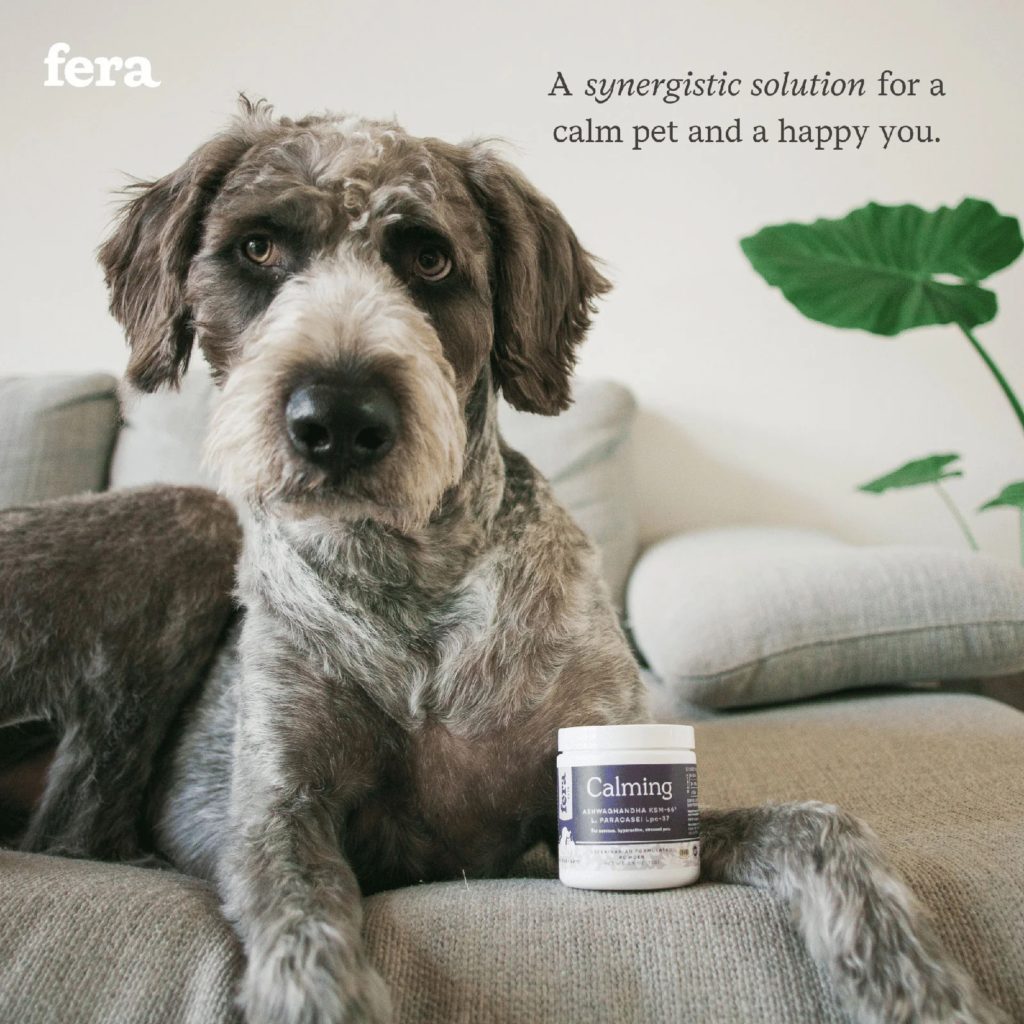
Start by determining the appropriate dosage for your dog based on their weight, and then gradually introduce the supplement into their diet.
Begin by adding a small amount of the powder to their food or water each day, and gradually increase the amount over the course of a week until they are receiving the full recommended dosage. If your dog is a picky eater or hesitant to try new things, you may want to mix the powder with a small amount of wet food or a treat to encourage them to eat it.
It’s also important to be consistent with the dosage and give the supplement to your dog at the same time each day to help them get used to the routine.
Comparing Fera Pet Calming Support to other calming supplements
Fera Pet Calming Support is a unique calming supplement for dogs that stands out from many other supplements on the market.
Ingredients
While there are many different calming supplements available, Fera Pet Calming Support is formulated with natural, high-quality ingredients that have been clinically studied and shown to be effective for reducing stress and promoting relaxation in dogs.

No Artificial Preservatives
Unlike some other supplements, Fera Pet Calming Support does not contain artificial ingredients, fillers, or preservatives that may be harmful to dogs.
Clinically Studied
Additionally, Fera Pet Calming Support includes a clinically studied probiotic strain, Lactobacillus paracasei Lpc-37®, which promotes a balanced mood by way of the Gut-Brain Axis.
This makes Fera Pet Calming Support a comprehensive and effective option for promoting relaxation and reducing stress in dogs. Overall, while there are many different calming supplements available, Fera Pet Calming Support stands out as a natural, high-quality, and clinically studied option for managing stress and anxiety in dogs.
Veterinarian Formulated
Dr. Dulake, who formulates Fera Pet’s supplements, is a Veterinarian and PhD in Animal Science. With his expertise and strong science background, Dr. Dulake knows how to create the perfect veterinarian-approved supplements for your pet’s health and wellbeing. Fera Pet’s supplements are rigorously tested, safety certified, and formulated with the highest quality ingredients available.

“As a veterinarian, acupuncturist and animal lover, I was shocked when I couldn’t find pet supplements with all of the qualities that I demanded for my patients. I also hated to see people waste their money on ineffective supplements that weren’t helping their pets! High-quality ingredients, correct dosages, no fillers and a combination of Eastern and Western medicines—was that too much to ask? I decided it wasn’t, which is why I partnered with my friend Emily to create Fera Pet Organics. We are driven by our devotion to you and your pets. Join us as we set the new standard for pet supplements.”
Frequently asked questions about Fera Pet Calming Support
Q: What is Fera Pet Calming Support?
A: Fera Pet Calming Support is a natural supplement formulated specifically for dogs to promote relaxation and reduce stress.
Q: What ingredients are in Fera Pet Calming Support?
A: Fera Pet Calming Support contains a synergistic blend of natural ingredients, including L-Theanine, GABA, organic passion flower, organic valerian root, KSM-66® Ashwagandha, and more.
Q: How do I give Fera Pet Calming Support to my dog?
A: Fera Pet Calming Support comes in a powder form that can be easily mixed into your dog’s food or water. The recommended dosage depends on your dog’s weight.
Q: Is Fera Pet Calming Support safe for dogs?
Q: Is Fera Pet Calming Support safe for dogs? A: Fera Pet Calming Support is a safe and natural supplement that is formulated specifically for dogs. However, as with any supplement or medication, there is a potential for side effects.
Q: How long does it take for Fera Pet Calming Support to work?
A: The effects of Fera Pet Calming Support may vary depending on the individual dog. Some dogs may experience benefits within the first few days of use, while others may take a few weeks to see results.
Q: Can I give Fera Pet Calming Support to my cat?
A: Fera Pet Calming Support is formulated specifically for dogs and is not recommended for use in cats.
Q: Is Fera Pet Calming Support a replacement for professional medical advice?
A: No, Fera Pet Calming Support is a supplement and is not intended to replace professional medical advice or treatment. If your dog is experiencing severe anxiety or stress, it’s important to consult with your veterinarian to determine the best course of action.
How long does it take for Fera Pet Calming Support to work?
The effects of Fera Pet Calming Support may vary depending on the individual dog. Some dogs may experience benefits within the first few days of use, while others may take a few weeks to see results.
It’s important to note that Fera Pet Calming Support is a natural supplement and may take some time to build up in your dog’s system to have an optimal effect.
Additionally, the supplement may be more effective for some dogs than others depending on the severity of their stress or anxiety levels. It’s important to be patient and consistent with the dosage and give Fera Pet Calming Support to your dog at the same time each day for best results.
If you have any concerns about the effectiveness of Fera Pet Calming Support for your dog, consult with your veterinarian for guidance.
The science behind Fera Pet Calming Support’s ingredients
Fera Pet Calming Support is formulated with a blend of natural, high-quality ingredients that have been scientifically studied for their effectiveness in promoting relaxation and reducing stress in dogs.
L-Theanine, for example, has been shown to increase levels of GABA, serotonin, and dopamine in the brain, which are neurotransmitters responsible for relaxation. GABA is a calming neurotransmitter that works synergistically with L-Theanine to help promote relaxation and reduce stress in dogs.
Organic passion flower and organic valerian root are natural herbs that have been used for centuries to promote relaxation and reduce anxiety in both humans and animals.
KSM-66® Ashwagandha is an adaptogenic herb that has been clinically studied and shown to reduce stress and improve overall well-being. Finally, the clinically studied probiotic strain Lactobacillus paracasei Lpc-37® promotes a balanced mood by way of the Gut-Brain Axis.
Overall, Fera Pet Calming Support’s ingredients have been carefully selected for their demonstrated effectiveness in promoting relaxation and reducing stress in dogs, and are backed by scientific research.
Safety and quality standards of Fera Pet Calming Support’s ingredients
Fera Pet Calming Support’s ingredients are carefully selected for their quality and safety, and are manufactured in an FDA-inspected facility that follows strict quality control standards.
The ingredients are sourced from trusted suppliers and undergo rigorous testing to ensure their purity, potency, and safety. Fera Pet is a reputable company that is committed to providing high-quality, natural supplements for pets.
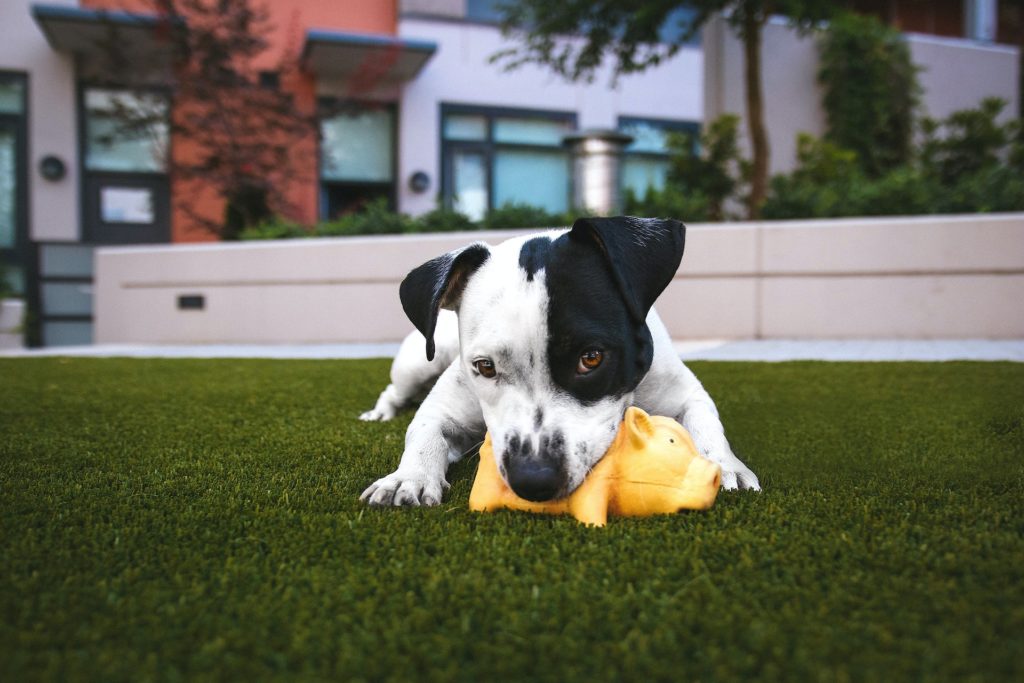
Their products are formulated by veterinarians and undergo extensive research and testing to ensure their safety and effectiveness.
Additionally, Fera Pet offers a satisfaction guarantee on their products, so you can feel confident in your purchase.
Overall, Fera Pet Calming Support and the company behind it are committed to providing safe, high-quality supplements for pets that are backed by scientific research and manufactured to the highest standards.
Tips for managing stress and anxiety in dogs beyond supplements
In addition to using supplements like Fera Pet Calming Support, there are several other tips and strategies that can help manage stress and anxiety in dogs:
- Regular exercise: Dogs need regular exercise to help burn off excess energy and reduce stress levels. Regular exercise can also help improve their mood and overall well-being.
- A consistent routine: Dogs thrive on routine, and having a consistent schedule can help reduce their stress and anxiety levels. Try to feed your dog at the same time each day, take them for walks at the same time, and establish a consistent bedtime routine.
- Crate training: Crate training can provide a safe and secure space for your dog to retreat to when they’re feeling stressed or anxious. Be sure to make the crate a comfortable and positive space for your dog to help encourage them to use it.
- Calming music or aromatherapy: Playing calming music or using aromatherapy can help create a relaxing environment for your dog. Lavender, chamomile, and vanilla scents are known for their calming properties.
- Behavior modification: In some cases, working with a professional dog trainer or behaviorist may be necessary to address underlying behavioral issues that may be contributing to your dog’s stress and anxiety.
Remember, every dog is different, and what works for one dog may not work for another. It’s important to be patient and consistent with your efforts to manage your dog’s stress and anxiety levels, and to consult with your veterinarian or a professional dog trainer or behaviorist for guidance and support.
READ MORE:
Stress Signals in Dogs
Signs of Stress in Dogs: How to Help An Anxious Dog
Fear Phases


